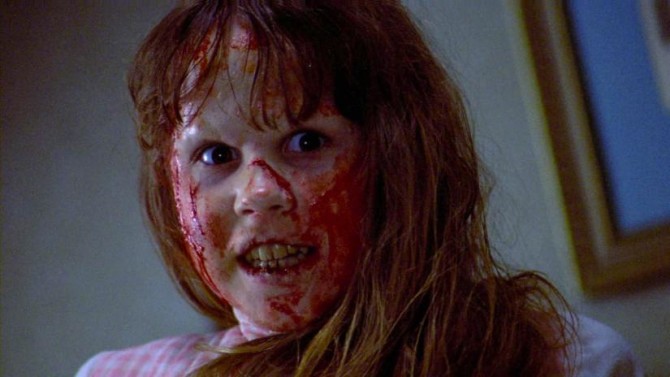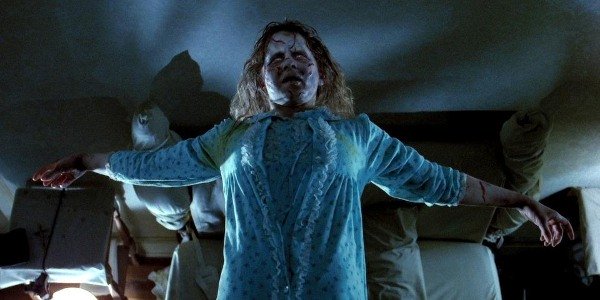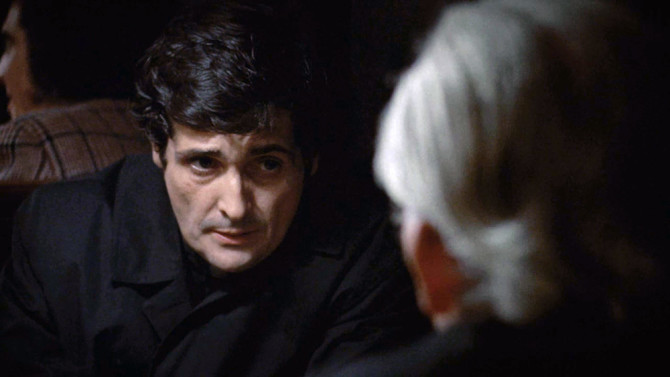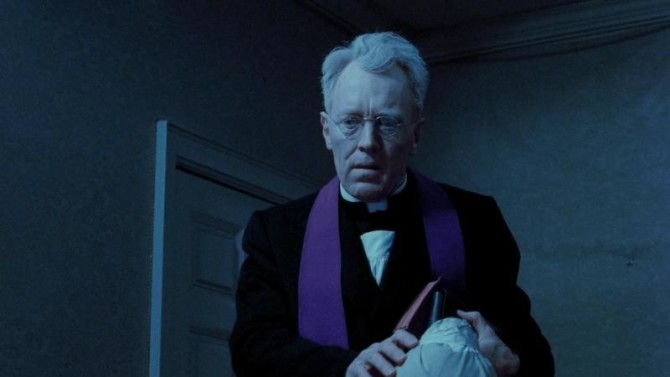And if so, what can horror writers in 2019 learn from it?
It’s the week of Halloween!!! Woooo-hooo. Any excuse to buy bags of Reeses Peanut Butter Cups is okay by me. This most spooky of spooky holidays got me thinking about the horror genre, specifically what makes a movie scary. There aren’t a whole lot of scary films out there these days. One or two slip through the system every once in awhile. But horror’s biggest entry this year, “It: Chapter 2,” was less horror than it was a giant blender of goofiness.
Where did horror go wrong, I wondered? For the answer, I decided to go back to what many people consider to be the scariest movie of all time, “The Exorcist,” and see if I could identify what it did that horror movies these days don’t. And if you in any way doubt this movie’s influence, consider this: The Exorcist is Warner Brother’s highest-grossing film ever when adjusted for inflation. How bout that?
It didn’t take long for me to notice something I don’t see much of today. The Exorcist is determined to sell the realism of its situation. It’s something writers often forget. In order to scare someone – I’m talking legitimately scare someone – you must convince the audience that the things they are seeing are real. Cause if the world is real, the fear is real.
The clearest example of this is the progression of how we get to the exorcism. In one of those cheapy straight-to-digital exorcism flicks, we see someone possessed and then five minutes later a priest shows up with a bucket of holy water. How realistic is that?
In The Exorcist, we start with Regan getting sick, then having a check-up, then more expensive check-ups, then a spinal tap, then a therapist, then a board of doctors see her, suggest shock therapy, then a priest, then the priest must evaluate Reese and make sure she’s really possessed — then, AND ONLY THEN, can an official priest who’s been trained to do exorcisms come in and perform one.
It was that evaluation that sold me the most. So many scripts I read are researched in five minutes, if that. A cursory look at a wikipedia page dictates the script’s entire reality. And if you approached this script that way, you never would have had a 20-minute sequence that involved bringing a priest in to evaluate the possessed character because you wouldn’t have known that these are the actual rules in the Catholic Church for approving an exorcism.
No doubt hacky writers would’ve had Father Karras start exorcising on Regan within minutes of arriving. And while it’s true the average audience member has no idea the church requires proof before they can allow an exorcism, they still feel something is off when the writer creates their own rules – that this probably isn’t how it goes down. And when an audience member gets that feeling, they start doubting the story.
Let me remind everyone of this screenwriting truism – The goal of every screenplay is to make the reader forget that they’re reading a story. So if you do anything that clues them in that this is all a facade, they’re enjoying your screenplay a little bit less.
Another big takeaway from this movie is just how helpless the situation feels. Helplessness is a key component for making any movie work. You want it to feel like there’s no way the heroes are going to win. That’s the ingredient that gets someone to keep watching. Because once they feel like the characters have a good shot at winning, there’s no more mystery, and therefore no reason to keep watching.
But it’s even more important in horror because the stakes are higher. Death is on the other side of helplessness. So if you don’t succeed, you’re losing lives. There are several scenes in the middle of this screenplay where Chris is pleading to doctors, therapists, and priests to please help her daughter. Please. There’s literally a demon stuck inside of her and there’s nothing she can do about it. That helpless cry is why we keep watching. We want her to find a way.
But the biggest factor in The Exorcist being so much scarier than the horror movies of today is the character writing. If we don’t believe in the characters or feel anything for the characters, we won’t care. We might still jump during a jump scare. We might still fear what that thing is in the dark corner that we can’t quite make out. But we won’t care what’s happening to the people. It’s an empty watching experience.
The Exorcist cuts back and forth between main characters Chris and Regan (at the house) and Father Karras (living his life). While Chris and Regan are going through this traumatic experience, we’re introduced to Father Karras’s relationship with his mother, who eventually dies. And she doesn’t just die. He left her for a church assignment and she died while he was gone. So he has a ton of guilt about what happened.
Why does that matter?
Well, when Father Karras finally comes into Chris and Regan’s lives, we know him. We feel something for him. And I’m not sure today’s screenwriters care about stuff like that. They’re more likely to bring this guy in with a picture of his mother on his phone. Maybe he’ll say, “Hey Ma, this is for you” before he takes on the demon. But, obviously, that’s not going to have the same effect as being with this man during the loss of his mother.
And not only that, they built a history into this character. He’s not just a priest. He’s a priest who was once a boxer. It’s a small thing but it differentiates him from all the other priests we’ve seen in movies. That’s another thing writers overlook these days. If I say to you, “Priest,” what image pops up in your head? I’m guessing a very generic image of a priest. But if I say, “Priest who used to be a boxer,” the image becomes a lot more specific, doesn’t it? That’s what you’re looking for when creating characters. You want to build that specificity so that this story feels different from all the other stories out there.
But the character development goes deeper than that. A lot of people think this movie is about a girl who gets possessed. They think that’s where the fear comes from. But I would argue this movie is about a mother who loses her child. Notice the difference. The first is a straight up horror trope. Possession. The second is something very human and relatable. And if you watch this movie again, you’ll find that many of the scenes are dedicated to Chris’s desperation to help her daughter. At one point she’s crying on the priest’s shoulder who she just met two minutes ago, begging for help. That’s why this movie hits you harder than the average horror flick today. It’s more about (or just as much about) this woman trying to save her daughter than it is a daughter who’s been possessed.
Now let me make something clear. It’s possible to overdo this element. You can make a really dramatic character piece inside the horror genre. But if you go too far, it stops being horror. People still want to be scared. They still want that thrill. So you have to include those scenes where Chris is trapped in the room and her daughter’s head spins around. If all of your scares are character driven, you get stuff like The Babadook. The Babadook is a solid movie. But it’s no Exorcist. And that’s because it doesn’t deliver on the horror element as much as it does the character development. So it’s important to respect that balance.
Now I’ll be the first to admit, you couldn’t make The Exorcist the same way today. It moves too slowly, especially the beginning. But the movie reminded me that if you have a strong concept, a respect for the reality of your subject matter, and a dedication to character development, that it’s okay to take your time in a story. We’re all told (and I’m guilty of this) that you must keep your script moving, keep it moving, keep it moving. But horror can benefit from a properly-paced slow build. That’s because there’s something about a slower story that mirrors the speed of real-life. It, therefore, helps convince the reader that what they’re experiencing is real. And like I said at the beginning of this, if you can convince someone that your story is real, you can invoke a true sense of fear.





